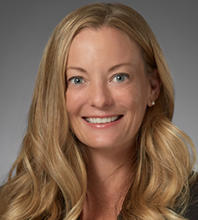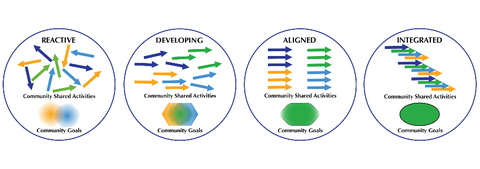Blogrige
The Official Baldrige Blog


If you care about improving your local economy, education, community health, or other aspects of residents’ quality of life, you may benefit from learning about the initiatives of Communities of Excellence 2026. One place you can read a concise summary of the innovative, Baldrige-based nonprofit and its work with communities around the country is Harry Hertz’s June 2020 blog.
Next, consider attending the session on Communities of Excellence 2026 during the Baldrige program’s upcoming, virtual Quest for Excellence® Conference. I recently spoke with Stephanie Norling, executive director of the nonprofit Communities of Excellence 2026, about that session and her work in general. Following are her answers to my questions.
Please briefly describe what you’ll cover in your Quest for Excellence Conference session, “Improving Quality of Life in America, One Community at a Time.”
It’s all about the community excellence journey of Toledo, Ohio. Our guest presenter, Angela Brandt, has been a role-model leader in taking this journey from concept to action in Toledo. Interestingly, her first exposure to Communities of Excellence 2026 was through a Quest for Excellence Conference session four years ago!
She’ll share a bit about why the Toledo community got involved with Communities of Excellence 2026, as well as sharing how their community excellence group is structured, some of their lessons learned, and some great examples of their early successes.
Would you please share an example or two of beneficial Baldrige-based practices you’ve seen communities using to improve quality of life?
One of the most fundamental Baldrige-based practices to Communities of Excellence 2026 is the community strategic planning process. Looking at the needs of residents across the entire system and leveraging the people, plans, and resources of multiple organizations reveals opportunities for alignment and synergy, addresses duplication of efforts, and increases overall impact.
For example, in San Diego’s South Region (a Community of Excellence 2026 site), this process resulted in collaborative efforts to address smoking cessation and workforce readiness. Another example is the Toledo community’s combined efforts in workforce development. Other communities are focusing their efforts to advance key priorities such as broadband access, affordable housing, and transportation.
What are your top tips for introducing or sustaining use of the COE2026/Baldrige framework?
- Agree on and stay true to your purpose (why you exist) as a community excellence group. Having a shared understanding of why you are all around the table builds trust and engagement, and it helps communicate to others what you’re doing and how they can be a part of the journey. When challenges present themselves, your purpose will re-ground you in why you are coming together.
- Distribute the leadership and the responsibilities of the work across the community as much as possible. A community of excellence can’t be led by a single sector or a single organization. As we’ve seen during the pandemic, when disasters occur, we have to adjust and be able to respond rapidly. A situation that affects an entire system such as a community cannot be addressed by a single sector or a single entity.
- Reinforce that this is a journey of continuous improvement, not a single project. Including leaders in your effort who understand this and will work with this mindset will set you up for success.
- Celebrate your successes, no matter how small (or big)!
What do you view as key reasons that U.S. communities today can benefit from participating in COE2026 initiatives?
I think the key reason that communities can benefit from adopting the Communities of Excellence Framework is that nothing we do happens in a vacuum, and too often we address our community challenges in a way that looks more at the individual parts of a community than the whole.
In our national learning collaborative, we approach our curriculum through a “train the trainer” model. We spend a lot of time on the importance of developing a culture of excellence to support how things are done in each community because it’s the leadership system that each community puts in place, along with their values and their culture of continuous improvement, that will sustain their work.
This year we completed an evaluation of the national learning collaborative effectiveness with the first six communities to complete the three-year curriculum. We learned that for those communities that didn’t already have some kind of leadership coalition in place, they would have liked to have more time to spend up front on fundamentals such as purpose, mission and vision, values, and engagement. This is one of the reasons we’ve developed a new course for this spring, “Preparing for your Community Excellence Journey.”
We are also retooling our curriculum and adding optional content up front for those communities that need extra time and support establishing their community excellence groups or just assessing what they have in place to find opportunities for improvement. We are excited to roll this out when our fifth cohort of the National Learning Collaborative begins in October of 2021. We are currently accepting applications for communities to join.
How would try to convince a group of senior leaders (in any sector) of the value of the Baldrige Excellence Framework if you had a minute or two to tell them something about it?
One of my favorite graphics from the Baldrige framework booklets is the one depicting “Steps toward Mature Processes.” We’ve adapted this (as shown below) to demonstrate the potential impact that using a Baldrige-based framework could have in a community. I think most communities would describe themselves as being in the “reactive” or “developing” phase, so this can be a very powerful illustration.

In addition, there are three key concepts I try to convey about the value of our Baldrige framework-based initiatives:
- We help communities, and the businesses and organizations within them, align goals and integrate actions to maximize win-win opportunities while respecting each other’s individual interests.
- We empower leaders to excel.
- Our roadmap for this journey is the Communities of Excellence Framework.
Has your perception of the Baldrige community changed since you served as a Baldrige examiner?
I’m not sure if my perception has changed, but I am constantly impressed and genuinely appreciate the commitment to the work I’ve seen being done by organizations and communities striving for excellence. The Baldrige community, including the Baldrige Performance Excellence Program, the Foundation for the Baldrige Award, Alliance for Performance Excellence regional and state member programs, Baldrige examiners, our Communities of Excellence 2026 board and faculty, AND everyday practitioners using the Baldrige Excellence Framework are so generous with their time and willingness to help. We wouldn’t be where we are without every single one of these groups of people.
Join us for our first-ever virtual conference!

Quest for Excellence® Conference
Monday, April 12–Thursday, April 15, 2021
The three-day virtual showcase will feature the 2019 and 2020 Award recipients, former recipients, pre-conference workshops, senior leader plenary sessions with live Q&A, more than 70+ on-demand concurrent sessions, conference keynote, and more!
Registration Closes Today!
Quest Registration Closes: April 8, 2021 at 5:00 p.m. ET





